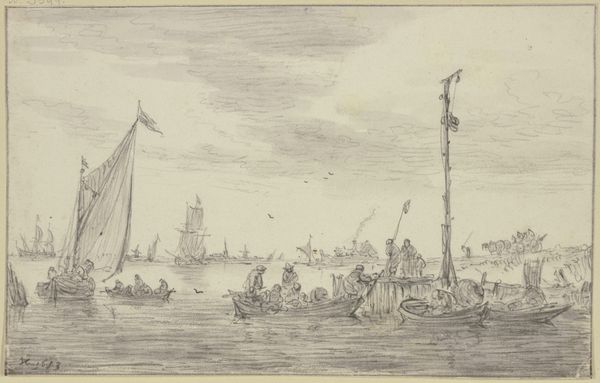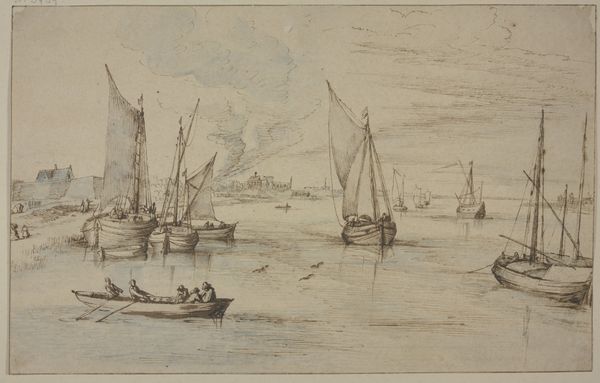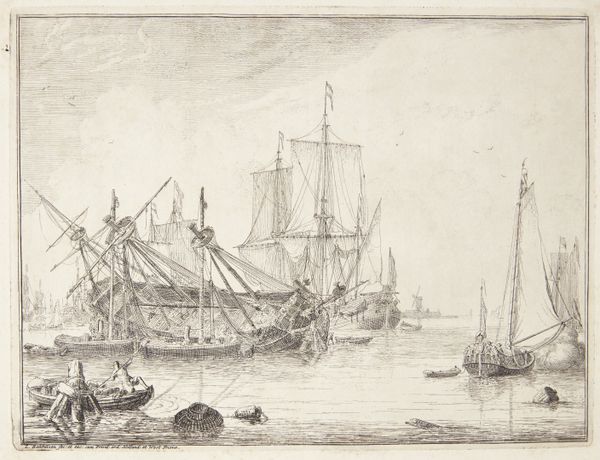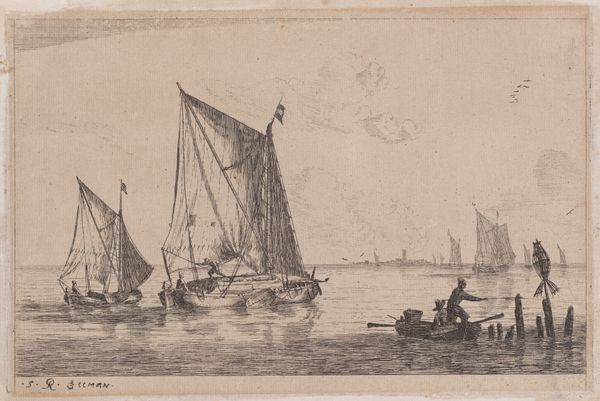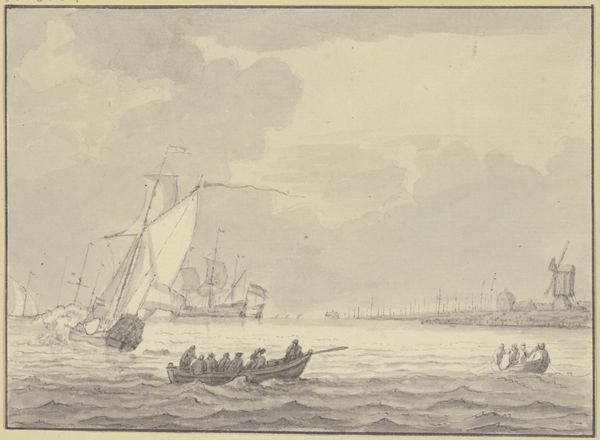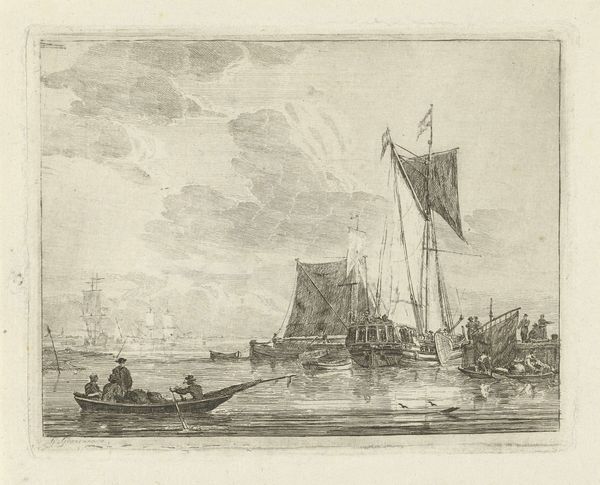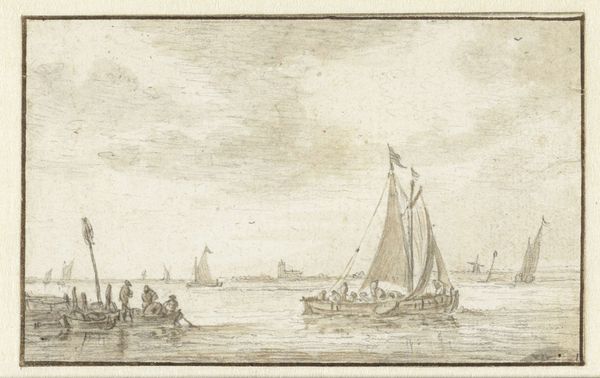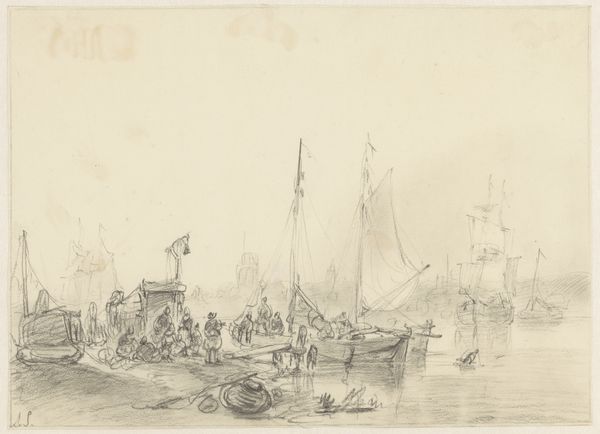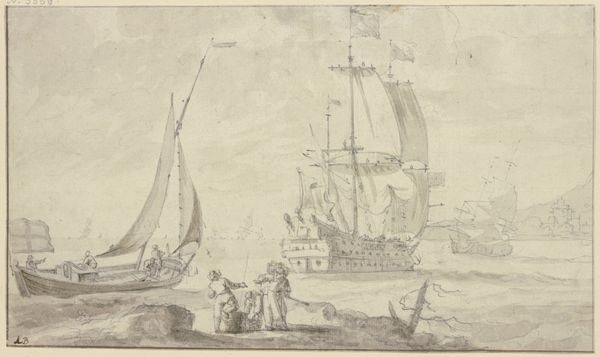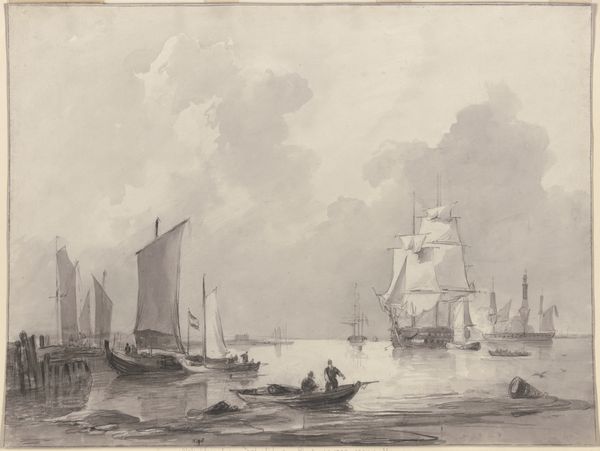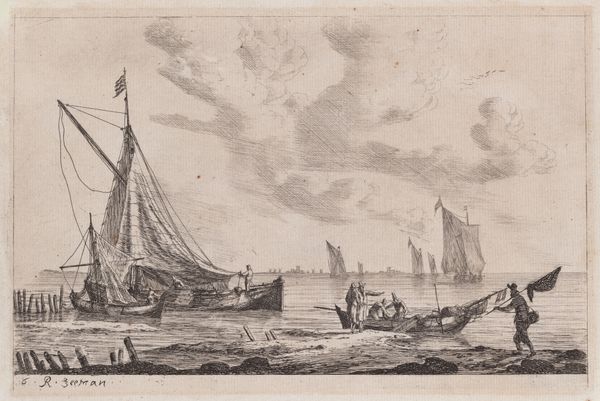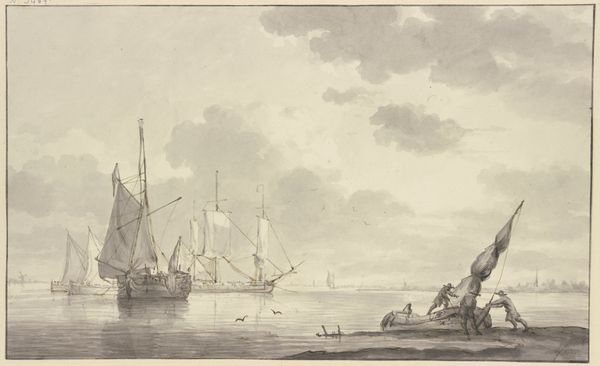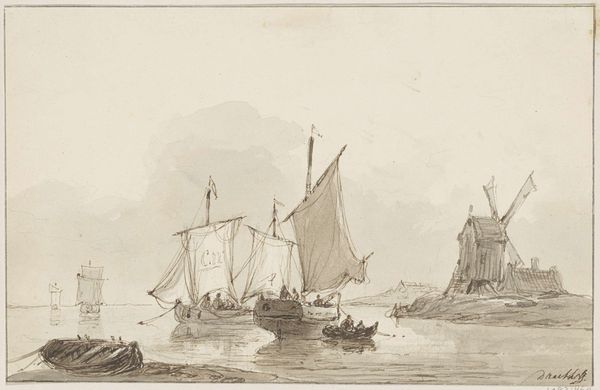
drawing, ink, indian-ink, chalk
#
drawing
#
netherlandish
#
toned paper
#
light pencil work
#
baroque
#
pen sketch
#
pencil sketch
#
personal sketchbook
#
ink
#
ink drawing experimentation
#
indian-ink
#
pen-ink sketch
#
chalk
#
pen work
#
14_17th-century
#
pencil work
#
sketchbook art
Copyright: Public Domain
Editor: Here we have Jan van Goyen's "Auf einem Fluss viele Fischerbote, rechts ein Dorf," or "On a River, Many Fishing Boats, a Village to the Right," from 1655, rendered in ink, chalk and Indian ink. It feels… understated, almost like a fleeting moment captured in monochrome. What stands out to you? Curator: It strikes me how this drawing encapsulates the relationship between the Dutch Republic and its waterways during the Golden Age. How do you perceive the role of the boats in relation to the village? Editor: Well, the boats definitely seem central to the scene, bustling with activity, while the village sits more distantly, almost passively, in the background. It's like the river is the lifeblood connecting everything. Curator: Precisely. Van Goyen, along with many of his contemporaries, recognized the crucial role rivers and canals played in the economic and social fabric of the Netherlands. Consider how the government invested heavily in infrastructure like canals to facilitate trade. Do you see any visual clues of that interplay here? Editor: Perhaps the number of boats and the detailed depiction of their rigging points to their importance? There's also a sense of depth created, emphasizing the vastness of the river system extending into the heart of the village, I guess. Curator: Absolutely. The composition directs our gaze from the foreground activity towards the village, reinforcing the link between maritime activity and urban life. Think about how paintings and drawings like this were often commissioned or acquired by the rising merchant class. Editor: So, in a way, it's a celebration of Dutch maritime power and prosperity during that period? Curator: I’d say this artwork normalises maritime economic success by documenting it for local viewership. The choice of such ordinary materials emphasizes everyday access to art in this society. This also allows for a direct connection to art in the average 17th century Dutch setting. Editor: I hadn't considered that before – thank you! Curator: My pleasure. Art and its place within culture is more closely intertwined than we often perceive.
Comments
No comments
Be the first to comment and join the conversation on the ultimate creative platform.
